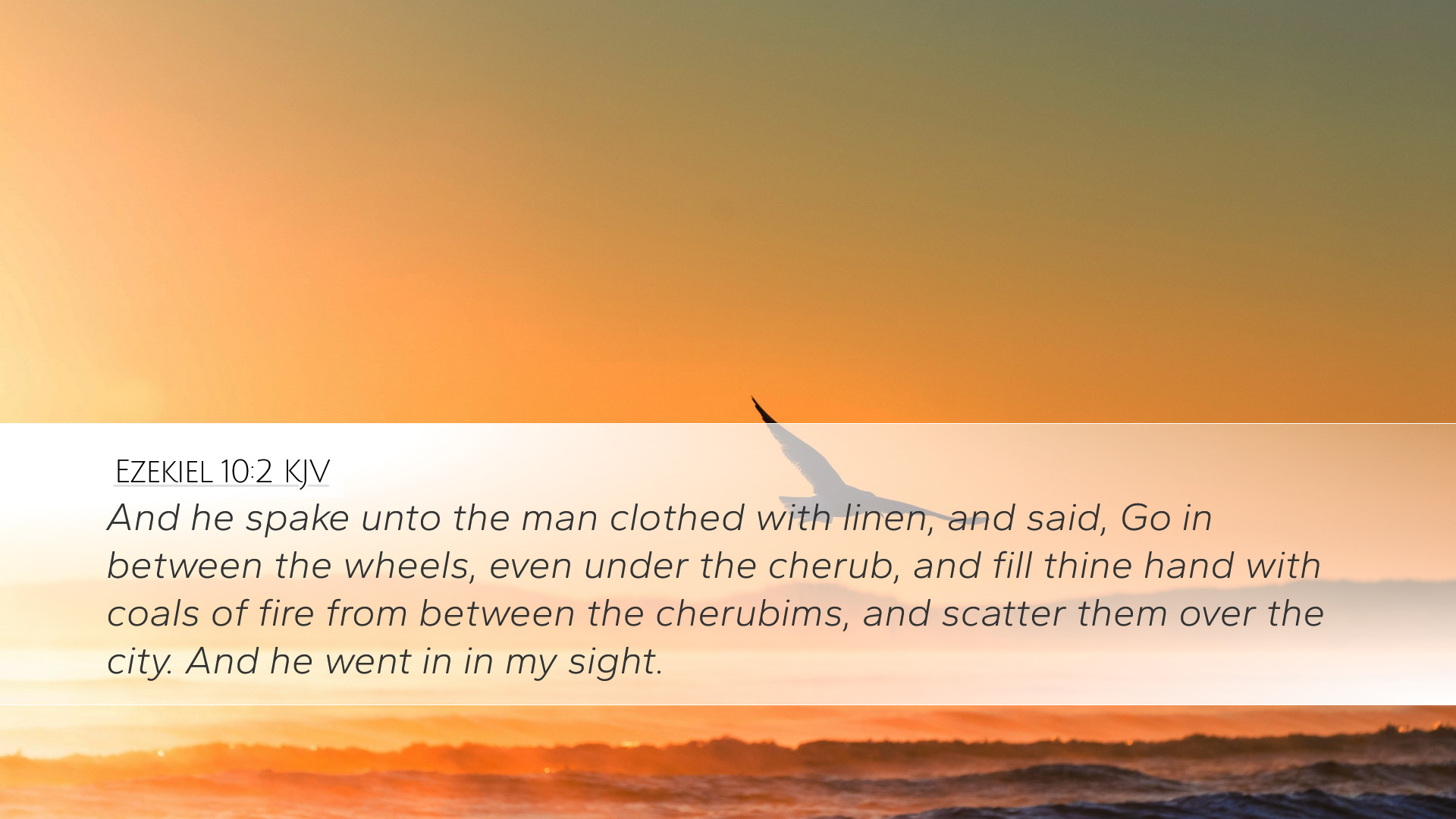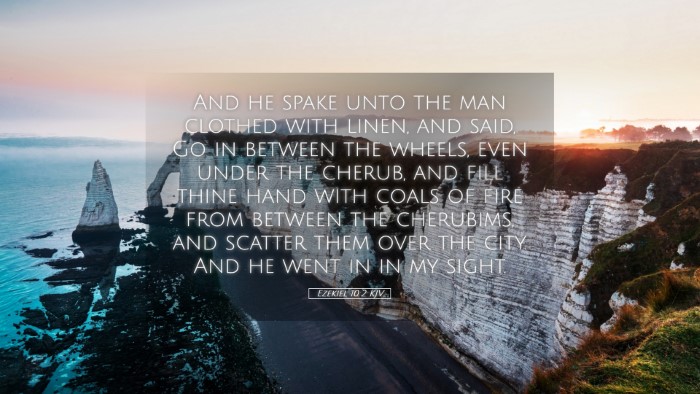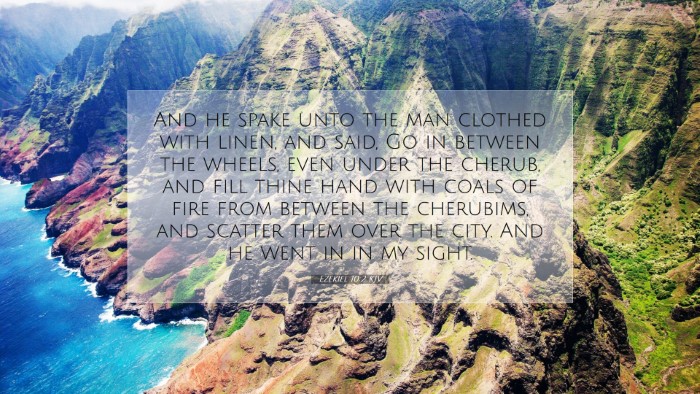Ezekiel 10:2 Commentary
"And he said to the man clothed in linen, Go in between the wheels, even under the cherub, and fill thy hand with coals of fire from between the cherubims, and scatter them over the city. And he went in in my sight." - Ezekiel 10:2
Introduction
The vision of Ezekiel in this chapter is deeply rich in symbolism and theological significance. This verse marks a pivotal moment in the prophetic narrative where the divine presence and judgment are central themes. Insights from classic public domain commentaries by Matthew Henry, Albert Barnes, and Adam Clarke provide a comprehensive understanding of the implications of this text for both the historical context and contemporary application.
Contextual Background
Ezekiel's prophecies occur during a time when Israel is in exile, reflecting God's judgment upon the nation due to its persistent idolatry and failure to uphold covenant fidelity. The preceding chapters illustrate the departure of God’s glory from the temple, and there is an urgent need for repentance and acknowledgment of divine sovereignty.
Exegesis of Key Elements
- The Man Clothed in Linen:
Matthew Henry highlights that the figure clothed in linen symbolizes purity and divine service. The linen attire reflects the priestly garments, indicating a role of mediation and sacred duty. This character serves as God's messenger, paradoxically representing both judgment and mercy.
- The Coals of Fire:
Albert Barnes emphasizes the significance of fire in the biblical context, often symbolizing God’s purity, holiness, and judgment. The coals taken from between the cherubim signify the fiery response of God to sin and the destruction that results from divine wrath. The act of scattering these coals symbolizes the spreading of judgment throughout the city, a stark reminder of the seriousness of sin and its consequences.
- The Cherubim:
Adam Clarke notes the cherubim as guardians of God’s holy presence, underscoring that God’s judgment is enacted in conjunction with His holiness. Their role as intermediaries heightens the gravity of the instruction given to the man in linen, highlighting the linkage between divine authority and the enforcement of justice.
- The Wheels:
Matthew Henry discusses the wheels as symbols of divine mobility and omnipresence. They illustrate that God's judgment is not confined but is mobile and pervasive, enabling the divine will to be executed swiftly and decisively. This imagery serves to reinforce that God's awareness and sovereignty extend beyond human perception.
Theological Implications
This passage articulates profound theological truths relevant to contemporary faith communities. The act of judgment, though fearsome, is rooted in God’s holiness and righteousness. The scattering of the coals over Jerusalem serves to remind believers that God's grace does not negate His justice.
- The Nature of God’s Justice:
Divine justice is integral to God’s character. It functions to prove His holiness and desire for order. This reality calls pastors and theologians to preach the dual aspects of God's character—His mercy and His judgment—neither of which should be neglected or overemphasized.
- The Call to Repentance:
The consequences of sin are vividly illustrated, prompting an urgent call for repentance. The image of divine judgment encourages believers to live uprightly, acknowledging the seriousness of sin and its impact on their relationship with God.
- The Assurance of God’s Sovereignty:
Despite the looming judgment, the presence of God between the cherubim provides assurance that He remains sovereign over chaos and destruction. This reflection is vital for those in pastoral roles, offering comfort and hope during turbulent times.
Contemporary Applications
- Pastoral Care:
Pastors are called to help congregants understand the balance of God’s love and justice. They must guide their communities through the scripture's teachings about sin and its ramifications, employing the imagery in Ezekiel to foster a deeper awareness of God's character.
- Biblical Preaching:
Pastors and preachers should consider incorporating the themes of this verse into their sermons, enriching their messages with the insights gained from this profound passage. This can challenge and encourage congregants towards a holier lifestyle.
- Theological Reflection:
Theologians and scholars should engage with this text to explore the nuances of biblical judgment and mercy, looking at how they interrelate within the broader narrative of Scripture. Consideration of how this judgment prefigures New Testament revelations of grace can enrich scholarly discourse and enhance the understanding of redemption.
Conclusion
Ezekiel 10:2 encapsulates a critical moment in the prophetic narrative, representing the intersection of holiness, judgment, and divine communication. The insights provided by classic commentaries deepen our understanding of this text and amplify its relevance to contemporary faith practices. As believers reflect on God’s sovereign authority, they are reminded of His holy character and the call to respond in faithfulness and repentance.


